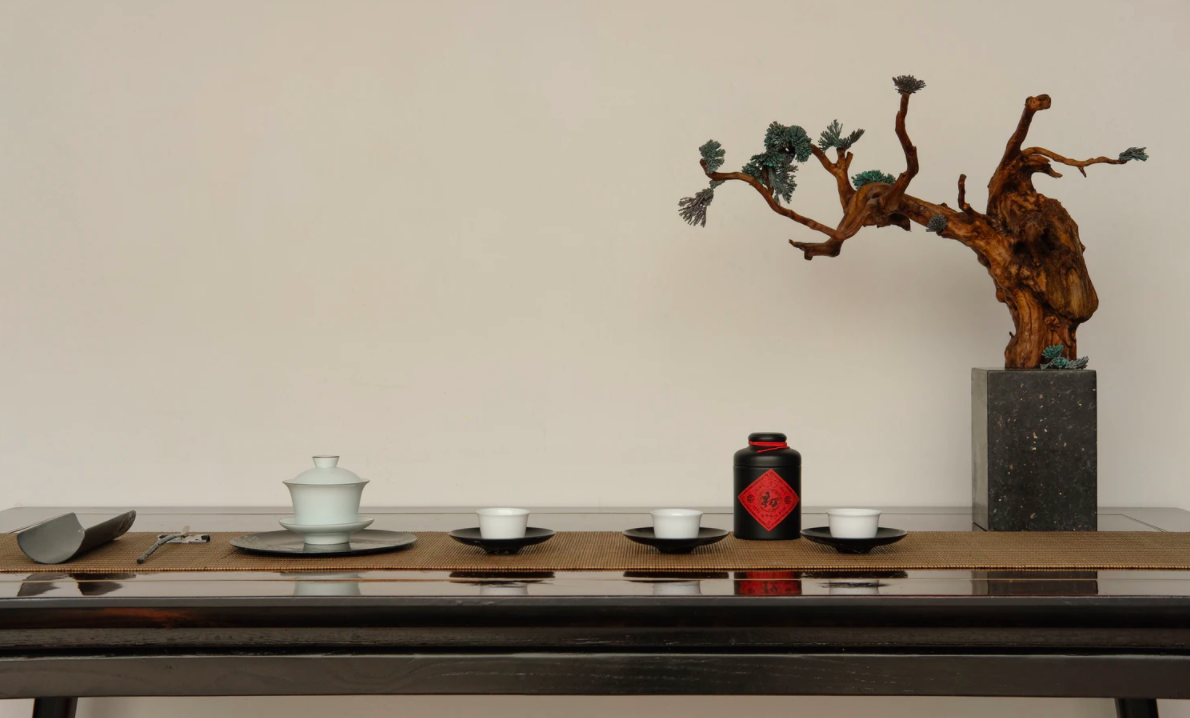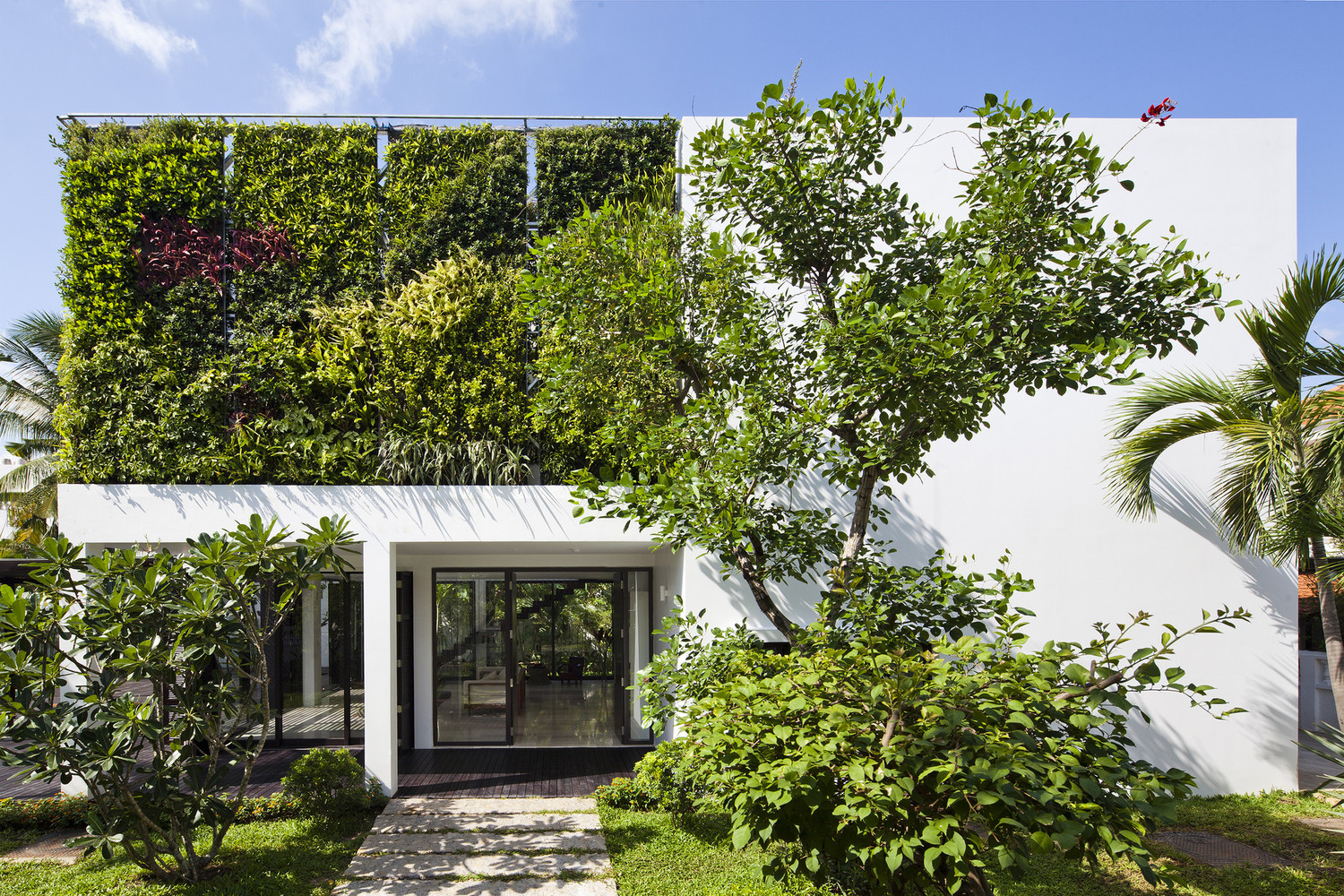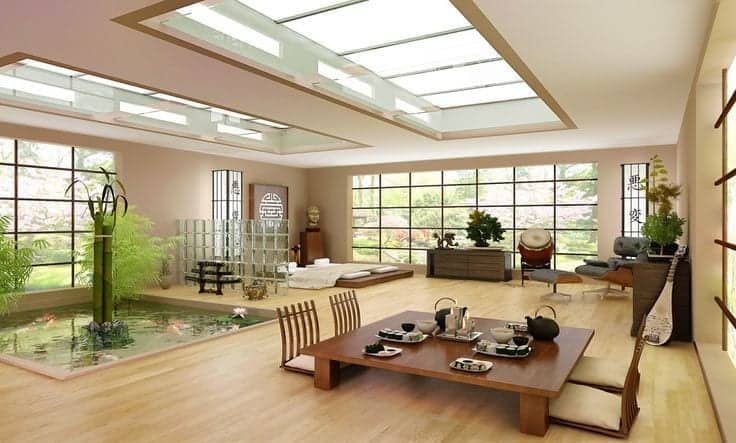There are many elements in our homes that we think of as simply “traditional” that were actually inspired by oriental design. So today we’re going to dive deeper into the styles that have inspired Westerners for centuries. And we’ll look at the traditional styles of four different Asian countries and their corresponding symbolism.

What is oriental design?
We often lump all Asian designs together and call them “oriental.” It’s true that all Asian countries bear similarities in their design tends. But they are, at the same time, highly individualistic. For example, certain symbols, colors, and materials are highly important to some cultures and not to others. Today, We’ll be touching on four of these individual countries: Japan, China, Vietnam, and Korea. Along the way, we’ll discover what is important to the people who live in these countries. And we’ll see why their traditional styles differ from all others.
Japanese interiors: minimalism and dragons
Traditional Japanese interior design is rooted in the Zen philosophy. Often Japanese homes are highly modern and minimalistic with clean geometric lines and open floor plans. Because of their affinity for nature within the Buddist and Shinto religions, often the interior of the homes mixes with the exterior gardens. This creates an open, breezy, and pleasant space.
White and light brown are the most common colors in Japanese design. The Japanese maintain strict minimalism. But they still incorporate symbolism into their choices of materials and accessories. Cats, foxes, peacocks, and dragons are important symbols. And each animal represents some virtue. For instance, carp fish, or “koi” is a symbol of perseverance.
Chinese interiors: color and relaxation
Chinese styles are distinctly different from Japanese styles in that they put emphasis on bright, vibrant colors, and richer wood tones. In China, red is a lucky color, which gives you an idea of how just colorful things can get in that country. Here, massive wall murals or Chinoiserie wallpapers featuring peacocks and other symbolic animals and birds are common. And intricate, painted, separating screens are still very popular as well. Additionally, dim, calm lighting and lacquered furniture is the traditional conception of Chinese design.
But the truth is, Japanese and Chinese design often overlap. China is more colorful, stocked with rich materials and intricately carved furniture. But Zen philosophy still takes predominance. And open concepts and nature are at the heart of traditional Chinese styles.
Vietnamese interiors: texture and greenery
Next is Vietnamese design. This interior design is not as well known, but it is fascinating. Minimalism is not as prominent in this country, at least when it comes to traditional homes. Texture is the main theme – decorative tiles, stuccoed brick, and rustic woods. Also, accessories such as plants, beautiful chandeliers (lots of them), and baskets are popular.
Gardens and plants are important in Vietnam. Some homes even have indoor gardens – trees growing right in their homes! Other gardens creep in through the windows. And potted plants can be found scattered everywhere throughout the home. Vietnamese people even consider some plants lucky. For instance, yellow apricot blossoms, peach blossoms, and kumquat trees to name just a few.

Vietnamese House incorporating Nature by Hiroyuki Oki via ArchDaily
Korean interiors: light and space
Of all the interior designs we’ve looked at so far, Korean interiors are the ones that have adopted Western design the most. This makes it an ideal style to implement here in America. Even if much of Korea has modernized, there are still a few key elements that make it undoubtedly Korean.
Bright rooms with plenty of sunlight coming in are important elements of every Korean home. (Think sun streaming through skylights and large windows.) As in Japan, light wood tones and white paint make this style distinctive. Low beds and seating give the rooms a cozy, easy-going feeling. Korean homes often feature floor-to-ceiling bookshelves stocked with good reads and small mementos. And large, airy, clean spaces are provided for work and study.
Traditional Korean colors – black, red, white, blue, and yellow – are always incorporated into aspects of life in Korea, including the home. These colors are called obangsaek, and they represent the elements of Earth: fire, water, metal, tree, and earth.
Oriental doesn’t mean just one thing
“Oriental” isn’t limited to just one place. In fact, it includes every country in Asia and their highly individual beliefs, symbols, and culture. These lands are steeped in history and mythology. And those elements are present even in the most modernized cities. From Japan’s relaxing porches and meditative designs to Vietnam’s traditional homes that are awash in texture, color, and life, there is much to discover about the significance and logic behind each style.
Interested in Mediterranean decor instead? Check out our 4 tips on how to create a calm mobile home retreat that incorporates elements from the beautiful Mediterranean.




